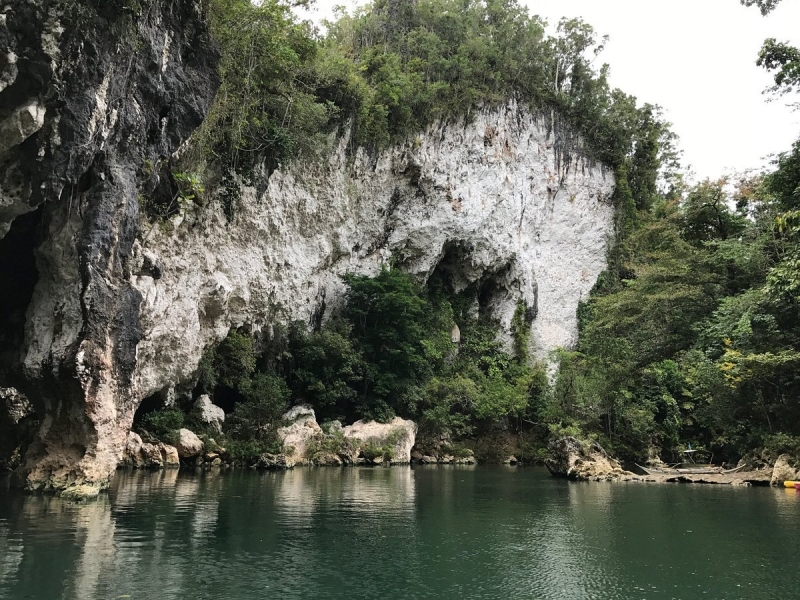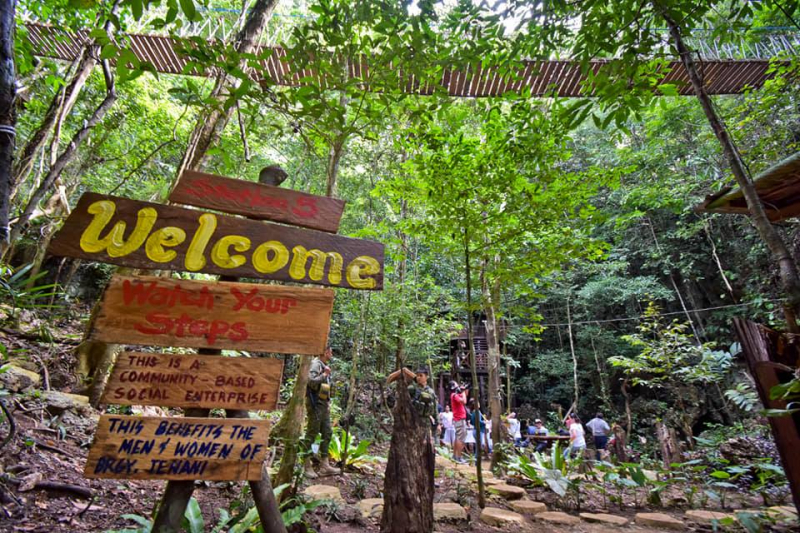Forest in Samar Island Natural Park
The Samar Island Natural Park in Samar is the Philippines' largest contiguous tract of old-growth forest. With an area of 333,300 hectares, it is the country's largest terrestrial protected area (824,000 acres). The buffer spans the island's three provinces (Eastern Samar, Northern Samar, and Samar Province) and covers 458,700 hectares (1,133,000 acres), or roughly one-third of the island of Samar. It is a biodiversity and endemism hotspot in the Philippines, home to a number of threatened species from the Eastern Visayas and Mindanao biogeographic regions.
The natural park consists of an interior highland with distinct accordant peaks and limestone or karst terrain surrounding it. The landscape in the south is made up of jungle-covered limestone ridges. Its geology is predominantly Miocene and Holocene, with a sedimentary formation made up of basement rocks and overlying clastic rocks or limestone. Grasslands, agroforestry areas, forest-over-limestone, riparian ecosystems, lowland mixed dipterocarp forests, and mossy or cloud forests are among its ecosystems. The Philippine eagle has been observed in the forest. It is also home to a large number of Philippine eagle owls, Philippine tarsiers, Philippine flying lemurs, and Philippine tree squirrels.
Location: 26P6+QVC, Maslog, Eastern Samar, Philippines












